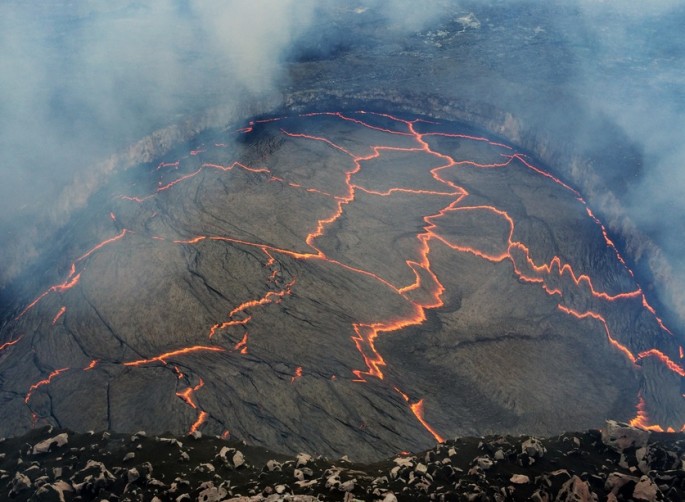Discovered in 2008, the lava lake found atop the Mount Kilauea in Hawaii is now at an alarming highest level ever recorded as the geological formation continues to rise. Locals are concerned about the recent eruption where this can damage nearby homes and establishments.
The Kilauea volcano is apparently the most active among the five major volcanoes that also formed the chain of islands of Hawaii where geologists consider this the most active volcano in the world. The volcano is at a towering 4,100 feet above the surface of the ocean where the last, powerful explosion occured in March 2008 which is the most recent volcanic event since 1924.
During that explosion seven years ago, hot magma and rocks blasted from the Halema'uma'u crater that formed a vent located on the southern part that measures 115 feet across. However, this current eruption caused this vent to open more into a gigantic gaping oval of 525 feet wide by 655 feet long.
Last Sunday on April 26, the lava lake is now just 10 feet located inside the rim of the basin known as Outlook Crater when it has risen in a matter of 24 hours.
According to Jessica Ferracane of the Hawaii Volcanoes National Park, tourists and visitors were able to see the spattering from the Jagger Museum observation deck where rumbling sounds from the crater were apparently caused by crater walls heating up as rocks fall into the lava lake below.
Now, flocks of tourists are gathering at the Jagger Museum near the crater in order to get a view of the spectacular rising lava lake bed. However, the fast rate in which the lava is rising can spell doom as molten rock can cover and devour the whole facility.
However, operators believe that this lava lake has risen and fallen in the last several years that could suggest that there won't be any imminent danger of overpouring lava.
The Hawaiian Volcano Observatory reports that even if the active lava lake within the vent can generate a spectacular show, it will also continue to emit sulfur dioxide gas that creates a "vog" or volcanic smog that can pose danger to downwind communities.
The Kilauea volcano was created some 300,000 to 600,000 years ago where it has risen from the sea floor, finally breaking the surface of the water about 100,000 years ago.
To date, apart from studying this seven year eruption, geologists and scientists are monitoring and recording the changes happening inside the lava lake that includes gas emissions and also to determine possible dangers to the locals.



























